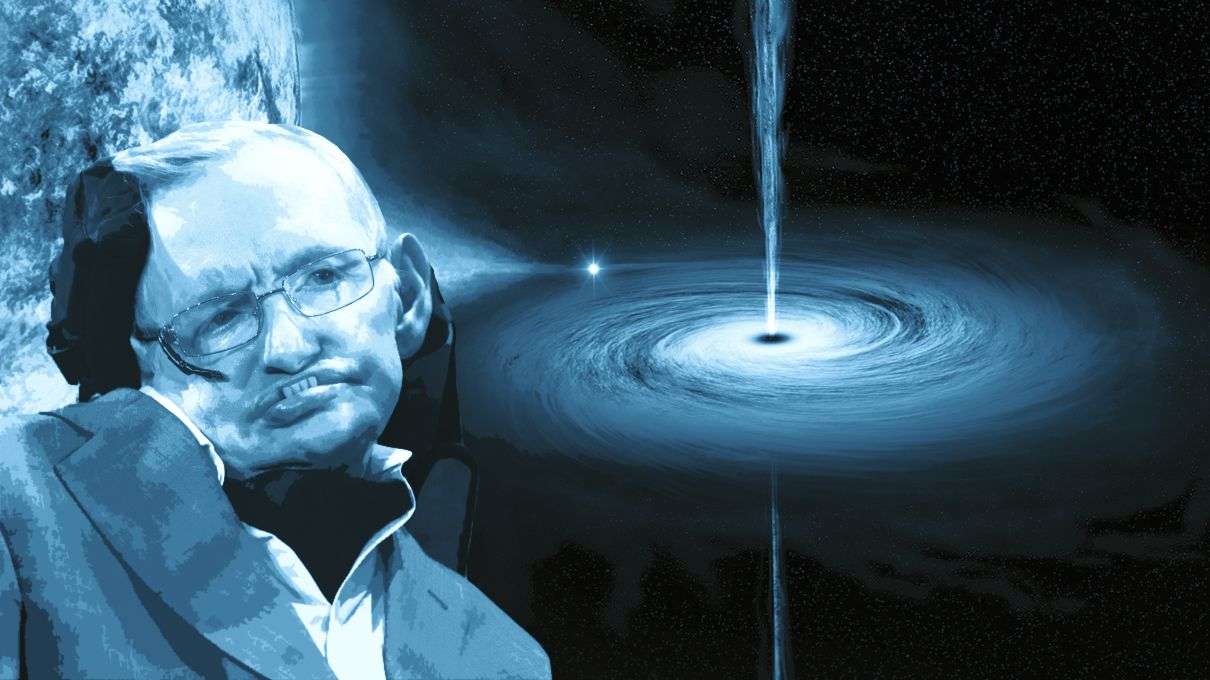A 50-year-old Stephen Hawking theorem has been observed in the natural world for the first time. Scientists from MIT, the California Institute of Technology, Cornell University, and Stony Brook University examined gravitational wave data from two inspiraling black holes. What they discovered in the collision proved Hawking’s Area Theorem: the event horizon of a black hole cannot shrink.

When a binary black hole system inspirals, the orbits of the two black holes compress, causing the system to generate gravitational waves. The emission rate grows as the orbits shrink and accelerate, and when a merger occurs, wave emission peaks. The two black holes become a single, new black hole, and according to Hawking’s theorem, that new black hole should be equal in area to the total area of the original two black holes. That’s exactly what the researchers discovered based on the observed inspiraling system’s wave data.
“Hawking showed that when quantum mechanical effects are taken into account, a black hole can spontaneously reduce its surface area over time by emitting radiation.”
According to Riccardo Penco, Ph.D., assistant Professor of High Energy Physics Theory at Carnegie Mellon University, the confirmation brings us closer to comprehending the complexity of black hole functions. “The detection of gravitational waves allows us to test black holes directly (as opposed to just inferring their existence indirectly by studying the motion of other objects around them). For a long time, we have studied black holes as mathematical objects endowed with a remarkable collection of properties (one of which is Hawking’s area law). We are now in a position to test these properties experimentally.”
Per Hawking’s calculations, if a black hole changes in area, its event horizon would stretch or constrict in correspondence with its new size. The event horizon, or the area of effect for a black hole’s gravitational field, is the point of no return for anything orbiting the black hole, including light. To escape, an object would have to travel faster than the speed of light.
Penco says Hawking’s Theorem holds true for the black holes observed by the Laser Interferometer Gravitational-Wave Observatory (LIGO)—a pair of U.S. facilities built to study gravitational waves—whose work these researchers used for their findings. However, Hawking’s Theorem may also apply to other black holes that appear to defy the Theorem until they prove applicable to another concept hypothesized by the physicist.
“Hawking showed that when quantum mechanical effects [like the behavior of subatomic matter and light] are taken into account, a black hole can spontaneously reduce its surface area over time by emitting radiation,” says Penco. Black hole evaporation, also known as Hawking radiation (see sidebar), is the proposed spontaneous production of electromagnetic radiation by black holes. So Hawking’s Area Theorem has one exception: Hawking radiation, which Hawking himself supports.

Hawking radiation, proposed in 1974, may cause a black hole to shrink. Subatomic particle pairs near the event horizon might split, with one particle—a photon or neutrino, perhaps—escaping and another, of negative energy, disappearing into the black hole. This influx of negative energy may eventually reduce the black hole’s mass to the point where it disappears. This indicates that the size of a black hole is inversely proportional to its temperature—the smaller the black hole, the warmer it is.
LIGO detected the first gravitational wave signal in this study—essentially a ripple in space-time resulting from cosmic interactions—in 2015. They discovered that the signal was the result of two merging black holes (which typically create stronger gravitational waves), as well as a huge quantity of energy that rippled over the space-time continuum.

The researchers posited that if Hawking’s Area Theorem held up, the event horizon area of the new black hole created from the merger would not be smaller than the total event horizon area of its parent black holes. To test their hypothesis, they divided the system’s gravitational wave data into two sections—before and after the merger—and evaluated both sections to see how their event horizon areas compared. The scientists then reanalyzed the wave data and found that the two areas are statistically the same—the total event horizon area did not decrease post-collision—within a 95 percent confidence margin.





